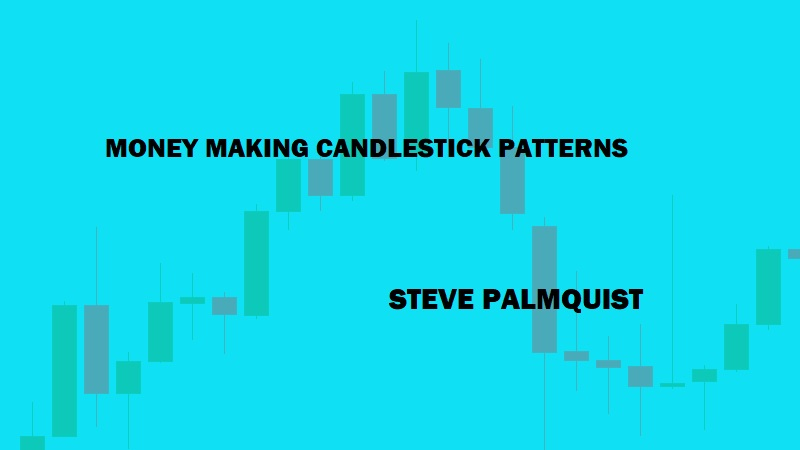Candlestick Patterns for Money Making Trading
Basics of Candlestick trading, Formations methods of candlestick, Money making methods of candlestick, Candlestick patterns, Candlestick chart, Doji candle, Hammer candlestick
Course: [ MONEY MAKING CANDLESTICK PATTERNS : Chapter 1: Candlestick Basics and Testing Requirements ]

Candlestick charting was developed in Japan about 300 years ago as traders noticed specific price patterns and began using them for forecasting price movements in the rice market.
CANDLESTICK BASICS AND TESTING REQUIREMENTS
Candlestick charting was developed in Japan about 300 years ago as traders noticed specific price patterns and began using them for forecasting price movements in the rice market. Japan had an active market in trading rice, and even rice futures, during the 1700s. Traders involved in this market noticed that certain patterns in price movements often preceded moves in the price of rice. They began to look for and study these patterns and to use them in determining whether to take positions.
While candlestick techniques have been used for hundreds of years in Japan, they are a relatively new tool for trading stocks in the West. It is thought that candlestick techniques started moving beyond a few pioneers in Western markets during the 1980s and gained popularity during the 1990s after the publication of several books on the subject, most notably Steve Nison’s Beyond Candlesticks: New Japanese Charting Techniques Revealed and Strategies for Profiting with Japanese Candlestick Charts.
Some traders feel that candlestick patterns are mysterious and must be highly effective if they have been in use for hundreds of years; however, there are many products that have been around a long time and may or may not be effective. It’s not the length of time something has been around that matters; it is whether it produces results. Some candlestick patterns are great tools; others are interesting but less effective. The trick for traders is to know which ones work best, and how to improve the others.
Many candlestick patterns were given names 300 years ago by the Japanese rice traders. The traders used the names to describe the pattern. Some, like the hammer pattern, look just like what the name suggests. Others seem a little less descriptive to Western traders. However, names of common Western patterns like island top, climax run, head and shoulders, and double top may also seem strange to new traders. The strangeness of the name is unusual at first, but soon becomes just a name as the trader studies and becomes familiar with the pattern.
In any case, a name is a name. It is the ability to recognize the pattern that is important. In this chapter, we will look at several popular candlestick patterns and then learn how and when to pull them from our toolbox and put them to use. But first, let’s go over the basics.
WHAT IS A CANDLESTICK
Candlestick patterns, like Western patterns, show relationships between the opening, closing, high, and low prices of a stock on one or more days. Bar charts and candlesticks are both constructed from the same information; they just display it in a slightly different manner.
A basic candlestick representation of each trading day looks like Figure 1.1. The rectangular area is the candlestick body and represents the distance or price change between the opening and the closing price for the day. If the stock moved up on the day, the candlestick body color is white. If the stock moved down, the candlestick body is black. The different body colors make it easy to glance at a candlestick chart and tell instantly if the stock was up or down for the day. If the stock is consistently moving up, you will see a chart with a lot of white bodies. If the stock is mostly moving down, you will see a chart with a lot of black bodies.
FIGURE 1.1: BASIC CANDLESTICK REPRESENTATION OF A DAY’S TRADING RESULTS

The thin lines on the top and bottom of the candlestick body are called shadows or tails. The end of the upper shadow shows the high price for the day, the end of the lower shadow shows the low price for the day. The day’s trading range is the difference between the top of the upper shadow and the bottom of the lower shadow. Single day candlestick patterns are defined by the relationships between the size of the body and the two tails. Multi-day patterns are defined by the relationship of the body and shadow patterns across more than one day.
Candlestick patterns, like Western patterns, may be formed over one or more days. An island top can form in three days, a head and shoulders may form over several weeks. A hammer is a one day candlestick pattern, while a bullish engulfing pattern forms over two days. In general, patterns occurring over a few days may indicate short term direction, and patterns occurring over several weeks may indicate longer-term direction of prices. Now let’s take a look at some of the more popular candlestick patterns. After learning these, we will investigate how often they work and what makes them effective.
MONEY MAKING CANDLESTICK PATTERNS : Chapter 1: Candlestick Basics and Testing Requirements : Tag: Candlestick Pattern Trading, Forex : Basics of Candlestick trading, Formations methods of candlestick, Money making methods of candlestick, Candlestick patterns, Candlestick chart, Doji candle, Hammer candlestick - Candlestick Patterns for Money Making Trading






